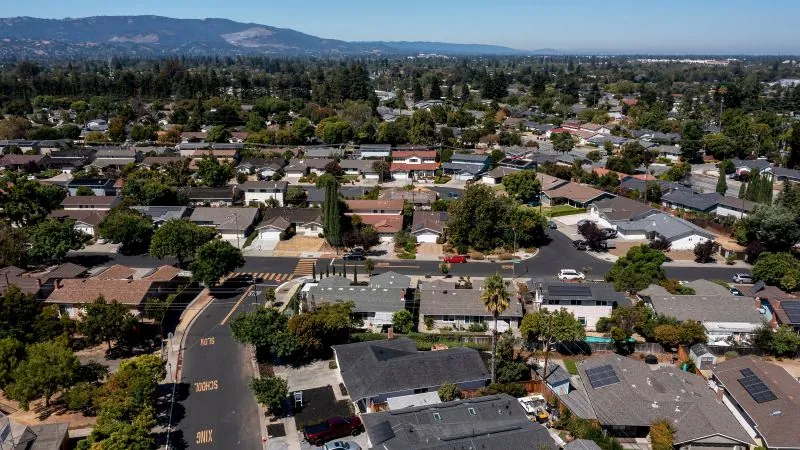
Mortgage Rates Hit Lowest Point Since February 2023 Following Fed's Groundbreaking Interest Rate Cut!
2024-09-19
Introduction
In a welcome relief for the housing market, mortgage rates have dropped significantly this week, further easing the pressure on America's increasingly strained home-buying landscape as the Federal Reserve undertakes crucial measures to stabilize the economy.
Current Mortgage Rate Trends
According to Freddie Mac, the average rate for a standard 30-year fixed mortgage plummeted to 6.09% for the week ending September 19, a decrease from the previous week's 6.20%. This marks a noteworthy drop from the two-decade high of 7.79% recorded last fall and is the lowest rate we’ve seen since early February 2023.
Impact on Homebuyer Demand
This dip in mortgage rates comes as promising news for prospective homebuyers who have been holding back, hoping for a shift in housing affordability. However, it follows a troubling trend as a recent report from the National Association of Realtors (NAR) revealed that sales of previously owned homes fell sharply in August, despite the more favorable mortgage rates.
August Sales Figures
Specifically, existing home sales slid by 2.5% from the prior month, bringing the seasonally adjusted annual rate down to just 3.86 million—marking the softest August sales figure since 2010. Compounding the issue, home prices persist in their upward trajectory, with the median price of existing homes increasing by 3.1% to reach $416,700, representing the 14th consecutive year-over-year rise.
Expert Commentary
NAR's chief economist, Lawrence Yun, commented on the situation, suggesting that although August sales were disappointing, the combination of lower mortgage rates and a growing inventory could set the stage for increased home sales in the coming months.
Challenges in the Housing Market
Many Americans have faced significant hurdles in purchasing homes in recent years, driven by rising mortgage rates and surging home prices amidst ongoing housing shortages. This situation had left the housing market stagnant last fall.
Federal Reserve's Rate Cut
Just as momentum began to build for a possible recovery in early 2024, the Federal Reserve was compelled to maintain higher rates longer than anticipated due to persistent inflation concerns. Now, after the Fed's first rate cut since the onset of the Covid-19 pandemic in March 2020, the landscape is shifting.
Future Predictions
Analysts predict that the central bank will lower its key interest rate by half a point before the end of the year, which could further influence mortgage rates downward. Lower borrowing costs are expected to attract buyers back into the market, boosting demand.
Loosening Market Conditions
While mortgage rates might continue to decline, their trajectory will largely depend on future economic data that could indicate the need for further Fed rate cuts. Mortgage rates typically mirror the performance of the 10-year US Treasury yield, which often responds to the Fed’s signals regarding interest rates.
Reactions From Economists
For instance, weaker-than-expected job growth data in July led to a decline in yields as market anticipation of a rate cut grew stronger, additionally supported by slowing inflation trends.
Time for Homebuyers
"In hindsight, buyers who chose to wait might be feeling justified in their decision," stated Daniele Hale, chief economist at Realtor.com. He emphasized that we are approaching a favorable time of year for homebuyers characterized by reduced competition, easing home prices, and extended market times for listings.
Looking Ahead
However, industry experts believe it may take several months for the impact of lower mortgage rates to be felt in terms of housing demand. Yun pointed out that many potential buyers, especially first-time ones, may need time to communicate lease terminations and embark on their home-hunting journey, which could take up to three or four months.
Observers anticipate that the easing of rates seen in July could begin to reveal positive market shifts as early as October.
Conclusion
Stay tuned for more updates on this evolving story as the housing market reacts to changing rates and economic signals!

 Brasil (PT)
Brasil (PT)
 Canada (EN)
Canada (EN)
 Chile (ES)
Chile (ES)
 España (ES)
España (ES)
 France (FR)
France (FR)
 Hong Kong (EN)
Hong Kong (EN)
 Italia (IT)
Italia (IT)
 日本 (JA)
日本 (JA)
 Magyarország (HU)
Magyarország (HU)
 Norge (NO)
Norge (NO)
 Polska (PL)
Polska (PL)
 Schweiz (DE)
Schweiz (DE)
 Singapore (EN)
Singapore (EN)
 Sverige (SV)
Sverige (SV)
 Suomi (FI)
Suomi (FI)
 Türkiye (TR)
Türkiye (TR)